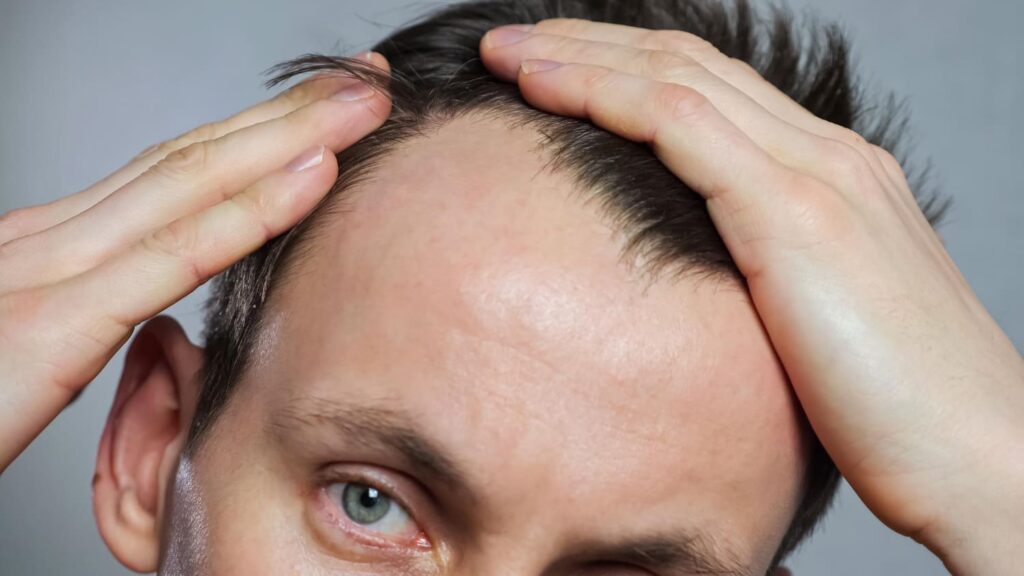
Are you struggling with hair loss? Which hair transplant technique will help you overcome this issue? FUE or DHI? Which technique is most suitable for you? Does the most suitable technique vary from person to person?
Hair loss is an unwanted process for most people, both physically, emotionally, and psychologically. That’s why deciding to undergo hair transplantation is an important step in personal transformation. For this very reason, the hair transplantation process must be managed in the most sensitive and accurate way possible.
However, everyone who will undergo this process has a common question in their minds: “Is FUE or DHI better for me?” In recent years, with the advancement of technology, hair transplant methods have undergone a major evolution, and the number of methods used has increased. This has made the choice more difficult and, to some extent, confused those considering transplantation. Because the increasing variety of methods has clarified the boundaries of the criteria evaluated during planning. This has made personalized planning possible.
Today, more comfortable techniques that offer more natural results have replaced traditional methods. Among these, the two most commonly compared methods are FUE (Follicular Unit Extraction) and DHI (Direct Hair Implantation). So, what is the difference between these two methods? Who should choose which technique? Let’s take a closer look at the details.
İçindekiler
What is FUE (Follicular Unit Extraction)?
The FUE method is considered a revolution in the world of hair transplantation. In this technique, hair follicles from the back of the head (or another suitable area) are individually extracted using micro motors. These follicles are then carefully transplanted into balding areas. The FUE technique has replaced FUT (strip method) as a less invasive alternative with a faster recovery process. This method is frequently preferred by patients.
Advantages:
- Low risk of scarring in the donor area.
- The recovery process is quick.
- Allows for the extraction of a large number of grafts.
- Hair transplantation can be performed on large areas.
Disadvantages:
- Since the grafts are kept outside after collection, the survival rate of some sensitive hair follicles may decrease.
- During transplantation, the correct angle and direction settings are highly dependent on the doctor’s experience.
Who Should Choose FUE?
- Individuals undergoing hair transplantation in large areas
- Those with a limited budget
- Patients who require the maximum number of grafts from the donor area
- Those who want to work with more established and experienced clinics
What is DHI (Direct Hair Transplantation)?
The DHI technique is a newer method. In this method, a special pen-like device is used. With this device, the hair follicle is extracted and immediately transplanted into the bald area. In other words, unlike FUE, the channel creation process is not done separately; channel creation and transplantation occur simultaneously.
Advantages:
- Since the grafts do not have to wait outside, the survival rate is higher.
- Denser transplantation is possible, especially in narrow areas.
- The natural direction and angle of the hair are easier to preserve.
- It offers the possibility of hair transplantation without shaving (a significant advantage, especially for women).
Disadvantages:
- The procedure takes longer than FUE.
- It may be more expensive.
- It may not be available at every clinic because it requires special equipment and training.
Who Should Choose DHI?
- Female patients (thanks to shave-free transplantation)
- Those with a sensitive hairline
- Those who need fewer grafts
- Those who want a quick recovery
Which Method Is Better? What Should You Consider When Making a Decision?
There is no single answer to this question. Because each individual’s hair structure, type of hair loss, expectations, and even motivation for hair transplantation are different, the type of technique used will also vary. Therefore, the important question here is not “which method is better?” but “which method is more suitable for you?” Factors to consider when making a decision:
- Level of Hair Loss: If a large area is involved, more grafts can be obtained with FUE. However, if dense and directional transplantation is desired in a limited area, DHI may be more effective.
- Condition of Your Donor Area: If there are enough high-quality grafts, DHI can be applied. In a weak donor area, FUE may require more controlled planning.
- Your Aesthetic Expectations: If you want a natural, dense, and directional hairline, DHI may be more advantageous. Especially the design of the front hairline is more controlled in this method.
- Time and Budget: DHI may take longer and be more expensive. FUE is both more economical and a widely used technique.
Two Separate Methods, One Common Goal: Permanent, Natural, and Satisfying Hair

It is important to remember that regardless of the method chosen, the most important factor is the experience and expertise of the hair transplant specialist. In other words, with an experienced doctor, proper planning, and high-quality equipment, successful results can be achieved with both FUE and DHI.
Hair transplantation is not only a matter of technology but also an artistic endeavor. The results should be visually appealing and help you feel confident when socializing. Therefore, the doctor’s experience, aesthetic perspective, and application precision are even more important than the method used. If you are considering hair transplantation, you may want to seek support from our experienced team.
Hairtrans.com was founded by world-famous plastic surgeon Dr. MFO, who is an expert in facial feminization or facial masculinization surgeries, and is managed under his leadership. Would you like to have a hair transplant under the coordination of a plastic surgeon with many years of experience?
Whether you are a trans woman or a natural born male or female, if you are looking for the best hair transplant, contact us now.


